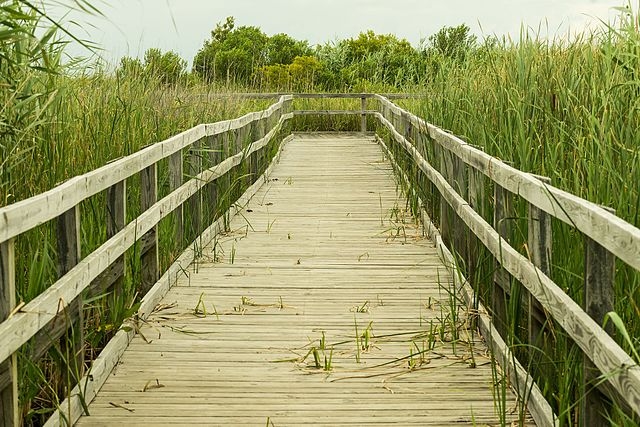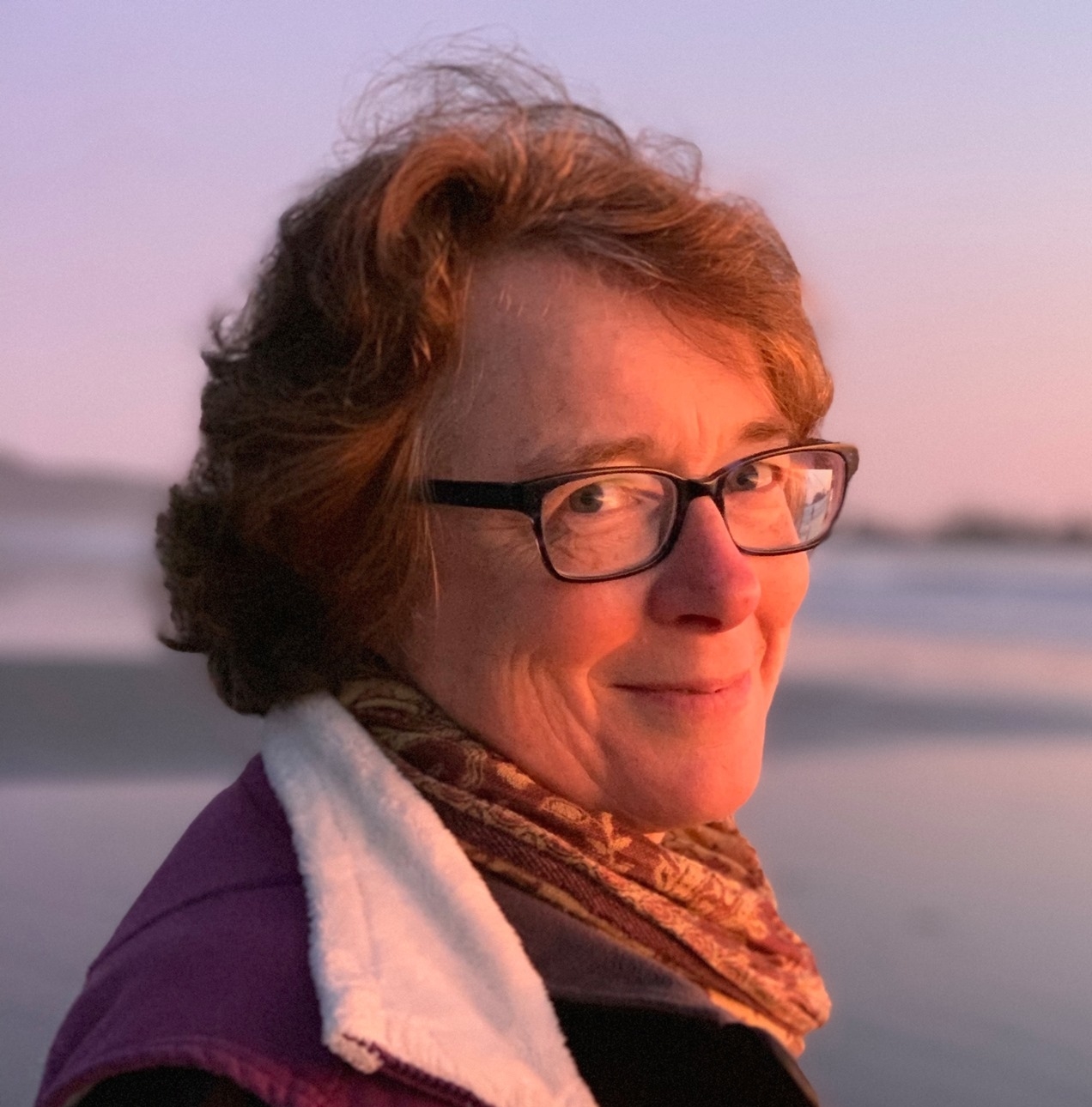Virginia Beach: bracing for local impact of global climate change
October 13, 2020

By Jennie Hoffman
Climate change is a global phenomenon, but its effects reflect a constellation of local and regional conditions. For example, the global average rate of sea level rise is roughly a tenth of an inch per year, but along the Eastern Seaboard of the United States sea level is rising at up to 10 times the global average. How much of a problem this poses depends on factors such as what infrastructure is in harm’s way; the economic resources communities can bring to bear; and the presence of protective natural features, such as coastal dunes and wetlands.
Developing and selecting adaptation strategies that reflect such geographic idiosyncrasies, as well as the needs and values of multiple stakeholders, isn’t always easy. It is both a scientific and a sociopolitical endeavor. During an interval focused on climate adaptation, students in Virginia Tech’s Executive Master of Natural Resources (XMNR) program dove into a case study that provided rich fodder for exploring these challenges: Virginia Beach’s Sea Level Wise project.
Virginia Beach encompasses rural and urban landscapes, military bases and tourist-heavy beach communities, nature preserves and residential areas. While it is a coastal city, its climate-related flood risks are driven by much more than just sea level rise, including wind, tides, coastal rainfall, and storm surges. In March of this year, Virginia Beach released a 159-page sea level rise adaptation strategy that has been more than five years in the making and includes a wealth of information on environmental, social, policy, and infrastructural considerations.

To put the City’s efforts in context, instructors Paul Wagner and Jennie Hoffman organized two separate panels, recorded so that students could watch on their own schedules (something that’s become ever more important in light of coronavirus-related changes in schooling and employment). Most panelists also made themselves available for a live question and answer session with students during the mid-month weekend of instruction.
One panel focused on climate adaptation policy, planning, and implementation more broadly. Scientists and engineers by training, all panelists commented on the importance of building strong communication and outreach skills to balance scientific knowledge. All also commented on what sorts of boundaries they see at play in climate change adaptation, and what approaches can bring people together across those boundaries.
- Doug Parsons, with America Adapts Media and Cimpatico TV, spoke about the ways different audiences perceive and respond to climate change-related risks, and what this means when it comes to communicating effectively about those risks. He drew not only on his current podcast and TV work, but also on previous climate work at the state (Florida Fish and Wildlife Conservation Commission) and federal (National Park Service’s Climate Change Response Program) levels.
- Pam Mason, Senior Coastal Management Scientist at Virginia Institute of Marine Science, spoke about her work on shoreline management and planning; in particular about the benefits of using a mix of nature-based and engineered approaches to protect coastal communities and infrastructure.
- Susan Taylor, a Vice President in the environmental business unit at ERT, has worked for multiple consulting firms over the years on projects ranging from unexploded ordinance to oil spills to sea level rise. A thread throughout much of her work has been assessing, communicating, and mitigating risk, and she spoke about how working on climate-related risks compared to working on other types of risk.
- Drawing on her adaptation experience working internationally with the World Wildlife Fund and within the United States with EcoAdapt and Adaptation/Insight, Jennie Hoffman discussed the intersection of culture, politics, and decision-making in adapting to climate change.
The second panel targeted adaptation to sea level rise in Virginia Beach and in the Hampton Roads region in which Virginia Beach is located. Students were able to hear from some of the people who made the Sea Level Wise strategy a reality.
- Brian Batten, senior coastal scientist with Dewberry’s resilience solutions group, helped shepherd the Sea Level Wise program from inception to completion as project manager. He shared his thoughts on why the project was so successful and how it compared with other sea level rise projects his company has tackled.
- Toni Utterback, head of Virginia Beach’s Stormwater Engineering Center, has also been instrumental in the Sea Level Wise project, and gave students the municipal perspective on the effort.
- Ben McFarlane, Senior Regional Planner for Hampton Roads Planning District Commission, discussed other regional adaptation work, its relationship with Virginia Beach, and the value of coordinated planning.
- Peter Coutu, with the Virginian-Pilot, gave a journalist’s perspective on adaptation, engagement, and communication in the Virginia Beach area, and why the City was able to make the progress it did.
With the panelists’ perspectives in mind, students dug into the Sea Level Wise Adaptation Strategy to do a stakeholder-focused climate risk and adaptation assessment. Student teams identified different stakeholder groups, their concerns, and their communication and advocacy channels. Teams then examined flood-related exposure, sensitivity, and adaptive capacity from the perspective of multiple stakeholder groups, and considered how, given their values and vulnerabilities, different stakeholders would perceive the near- and long-term costs and benefits of some of Virginia Beach’s proposed adaptation measures. This gave students a chance to understand how, even within a small geographic area, different groups can experience the effects of climate change differently depending on the specifics of their location and the resources available to them.
Bringing all of this together, students used their results to support a variety of deeper analyses, such as examining tradeoffs among stakeholders or over time, and came up with recommendations for Virginia Beach going forward. In their recommendations, students grappled with some of the key issues of our time. How do we understand and respond to climate change impacts with an eye to equity? How do social and economic shifts related to COVID-19 inform what’s needed and what’s possible when it comes to climate change?
It was interesting to think about climate change vulnerability and adaptation while XMNR students, faculty, and staff are figuring out how to adapt to the changing reality brought on by COVID-19. The XMNR program has always built adaptive leadership, collaboration, and networking skills in its students; the opportunity to observe and to practice these skills has rarely been so direct!

Jennie Hoffman has been broadly engaged in the field of climate change adaptation for almost two decades. She uses targeted research, direct engagement, and capacity development to help groups and organizations integrate climate considerations into conservation, planning, and natural resource management efforts. She has helped to deliver workshops and training to more than 1,700 people on topics including decision analysis, scenario planning, climate change vulnerability assessment, and adaptation planning. Project and training locations have spanned Latin America, Oceania, Africa, and North America, with partners and participants including charitable foundations; non-governmental organizations; citizens’ groups; and national, state, local, and tribal governments. She is author or co-author of several books and reports, including Climate Savvy: Adapting Conservation and Resource Management to a Changing World. She has a PhD in marine ecology, but when environmental problems seem daunting she calls on her undergraduate degree in geology for a long-term perspective that keeps her chipper.


